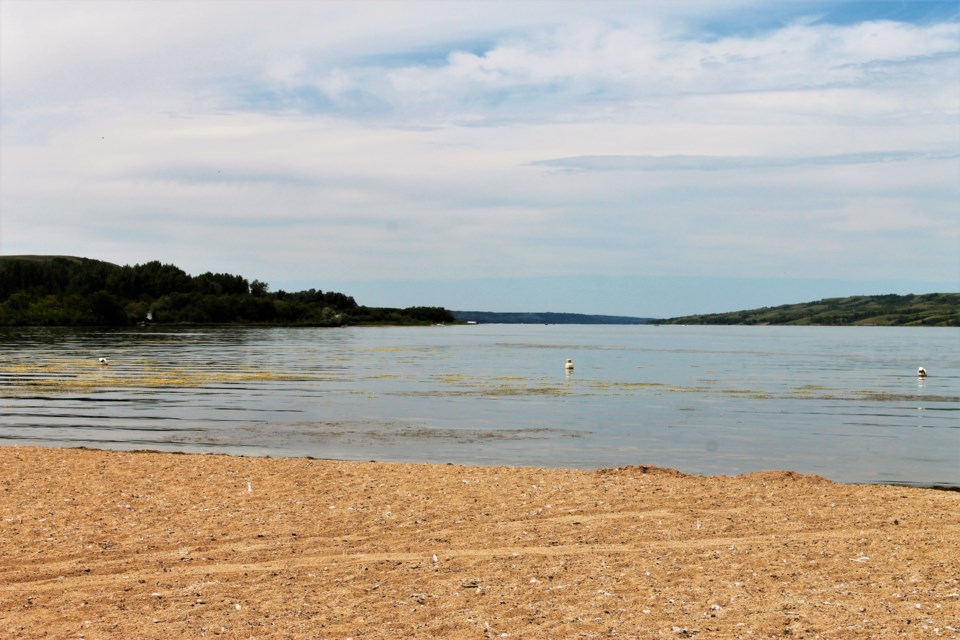A proposed potash mine nearly 150 kilometres away from Buffalo Pound Lake will use the lake’s water for its operations. While environmental groups are concerned, some provincial officials are not.
The provincial government granted conditional environmental assessment approval to CanPacific Potash’s $4-billion Albany project, located in the Sedley-Francis area. However, the project must meet several more conditions, including mitigating or compensating for affected native grassland and wetland habitat.
It must also receive approval from the rural municipality, the Water Security Agency (WSA), the Ministry of Highways and the Ministry of Energy and Resources.
Albany would be a solution mine that would produce 3.25 million tonnes of potash each year. It likely won’t start operations until at least 2025.
Solution mining involves injecting water underground to dissolve deep potash deposits into brine. The Albany mine is expected to use between 24,000 and 39,600 cubic metres — or 16 Olympic-sized swimming pools — of untreated (raw) water every day from Buffalo Pound Lake.
An Olympic-sized pool contains 2.5 million litres of water.
City of Moose Jaw
“Based on information from Buffalo Pound Water Treatment Plant and Water Security Agency, we have no concerns about the future of available water to serve the City of Moose Jaw,” Craig Hemingway, communications manager for Moose Jaw, said in an email.
Buffalo Pound Water Treatment Plant
“If they’re taking water from Buffalo Pound Lake, that’s not really a concern for us … ,” said Ryan Johnson, general manager of the Buffalo Pound Water Treatment Plant. “It would probably be a benefit to us from an operational and quality perspective.”
There is 90 million cubic metres — or 90 billion litres — of water in the lake, which provides a three-year supply of water. The plant treats 100 million litres of water per day; last year Moose Jaw consumed 5,526.26 megalitres — or 5.5 billion litres — of water from the plant, while two years ago the municipality consumed 5,676 megalitres.
The Water Security Agency (WSA) manages the lake based on its levels, Johnson explained. This means there is very little water movement through the lake and thus poor water quality.
There is good quality water in hot, dry years because the province releases water regularly from Lake Diefenbaker through the Qu’Appelle River chain into Buffalo Pound Lake to maintain its level. The water treatment plant likes this since it can access better quality water.
Besides the water treatment plant, Yara Belle Plaine, Mosaic Potash and K+S Potash also take water from the lake. The plant uses more water regularly than those companies combined, Johnson continued. If the approved Yancoal potash project and Albany project come to fruition, this means fresher water will come continually from Lake Diefenbaker to top up Buffalo Pound Lake.
The water treatment plant works with the WSA to determine what the demand for water will be in the future. Based on the WSA’s 25-year scenarios, Johnson remarked, there is no indication of any future water shortages.
Water Security Agency
The proposed potash mine will have little to no effect on the water supply at Buffalo Pound Lake, echoed WSA spokesman Patrick Boyle. The provincial agency doesn’t believe any harm will come to the lake based on its long-term scenarios.
Boyle praised the provincial government’s foresight in the late 1950s to build the Gardiner Dam, which led to the creation of the Lake Diefenbaker. This massive body of water supports communities, producers and businesses all along the Qu’Appelle River chain.
Although the potash project received approval from the Ministry of Environment, the Albany project still needs to meet the WSA’s regulatory requirements, he explained.
It won’t issue any permits until then. When it does, it will also issue a water licence and indicate how much water the potash mine can use. The project’s owners will also have to pay an industry water user fee.
“I don’t believe (supply levels) is a concern at this point in time … ,” Boyle added. “There is adequate supply at Buffalo Pound now and into the future.”
Opposition groups
The grasslands conservation organization Public Pastures – Public Interest has denounced the project as putting too much strain on an already stressed watershed.
“We can’t be approving these kinds of extractive projects that are going to pollute and remove a whole bunch of water from the water cycles,” Trevor Herriot, co-chair of the group, told the Regina Leader-Post on Sept. 4. “It just seems completely ludicrous and irresponsible.”
Another provincial environmental group also disagrees with the project.
“The Prairies is already one of the extreme water crisis areas on the planet,” Jim Harding, director of the Qu’Appelle Valley Environmental Association, also told the Leader-Post. “Yet there is nothing about the cumulative impacts of promising all this water to a growing number of solution mines.”




